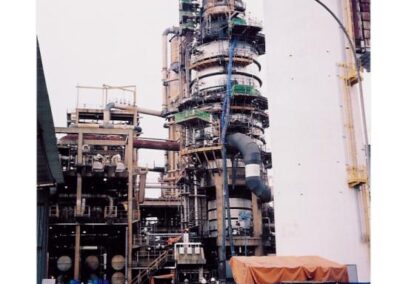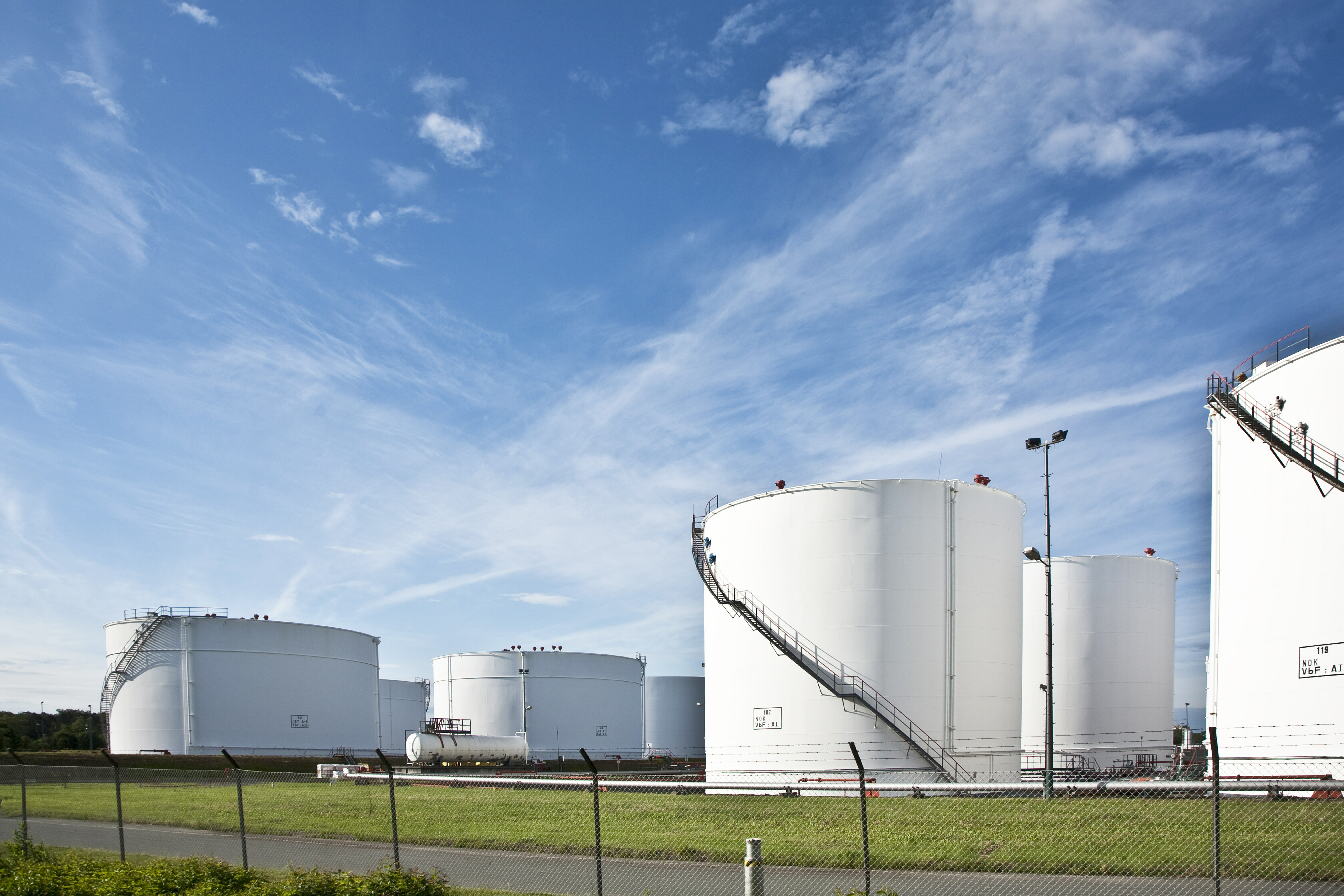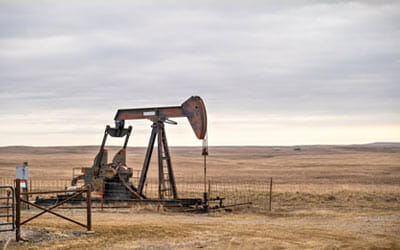Part 19
Water Formed Scale
Scaling is a common problem frequently encountered in oil and gas production, petroleum refining and other industrial operations where water is encountered or used. Some of the most common water formed scale encountered in the production or refining of oil is calcium carbonate, calcium sulfate and barium sulfate. Other less common scales are strontium sulfate, iron (II) carbonate, iron (II) sulfide, Iron (II) hydroxide, iron (III) hydroxide and iron (III) oxide.
These water formed scales result when ions that form slightly soluble salts or compounds are present in the system at concentration levels that exceed the saturation conditions of the ion in question.
Ions such as Ca2+, CO3-2, SO42-, Ba2+, Fe2+, Fe3+, OH–, S2+, and Sr2+ for which water has a limited capacity for maintaining in solution, and can combine to form precipitates that collect or crystallize out on solid surfaces and produce substances called scales. These slightly soluble salts once formed in solution are responsible for many production problems which cost tens of millions of dollars each year to resolve.
Solubility is defined as the limiting amount of a solute which can be dissolved in a solvent under a given set of physical conditions. These solutes are present in water as ions. Certain combinations of these ions are compounds which have a low solubility in water. The water has a limited capacity for maintaining these compounds in solution, and once this capacity, or solubility, is exceeded the compounds precipitate as solids.
Precipitation of solid materials that may create water formed scale will occur if:
- The water contains ions which are capable of forming compounds of limited solubility.
- There is a change in the physical conditions or water composition which covers the solubility below the concentrations present.
Solid precipitates may either stay in suspension in the water, or they may form a coherent scale on a surface such as a pipe wall. Formation plugging may occur by the filtration of suspended solids from the water; or a solid scale may form on the formation face.
Scale formation often restricts the flow through injection and production lines and tubing strings. It causes pump wear or plugging and creates additional stress when it forms on rod strings. Fire tubes in all types of heaters fail due to overheating caused by scale deposition. Corrosion is often more severe under a scale deposit. Heat transfer is restricted by scale formation on heat exchanger surfaces increasing the cost of production. These are but a few of the problems created by water-born scale deposits.
Most Common Water Formed Scales
Calcium Carbonate – CaCO3
Calcium carbonate can be formed by the combination of the calcium ion with either the carbonate or the bicarbonate anion as follows:
- Ca2+ + CO3 -2 → CaCO3
- Ca2+ + 2(HCO3-1) → CaCO3 + CO2 + H2O
As the concentration of carbon dioxide is increased in the water reaction (b) shifts to the left, resulting in less calcium carbonate precipitation. However, the carbon dioxide forms carbonic acid in the water thus decreasing its pH and increasing its corrosivity. Contrary to the behavior of most materials, calcium carbonate becomes less soluble as temperature increases. The hotter the water, the more likely CaCO3 scale will form.
Consider the following when dealing with CaCO3 scale:
- Scaling increases with temperature increases.
- Scaling increases as the partial pressure of CO2 decreases.
- Scaling increases as the water pH increases.
- Scaling increases as the total dissolved solids decreases.
Calcium Sulfate – CaSO4 (Gypsum)
Most calcium sulfate deposits found in the oil field are gypsum. CaSO4 ∙ 2H2O is the most common form at temperatures below 100°F. Above this temperature, the anhydrite (CaSO4) may be formed.
Gypsum solubility increases with temperature to approximately 100°F, then decreases with temperature. The presence of dissolved salts other than calcium and sulfate ions increases the solubility of gypsum or anhydrite up to approximately 150,000 ppm; over this, the solubility decreases. A pressure rise can cause calcium sulfate solubility to increase. This is because the increased pressure reduces the size of the calcium sulfate molecule.
Barium Sulfate – BaSO4 (Barite)
 Barium Sulfate is the least soluble of the water formed scale types. Barium sulfate solubility increases with temperature. Because of this property, it may be more of a problem in source and producing wells. Its solubility also increases as the total dissolved solids content increases.
Barium Sulfate is the least soluble of the water formed scale types. Barium sulfate solubility increases with temperature. Because of this property, it may be more of a problem in source and producing wells. Its solubility also increases as the total dissolved solids content increases.
Barium sulfate scales are non-reactive to acid treatment for the exception of hot, concentrated sulfuric acid. Barium sulfate is also non-responsive to forming coordination complexes with chelant chemistries. Due to these two “inert” characteristics, barium sulfate scales present large and expensive problems in the oil and gas production industry by plugging flow lines, piping, exchangers and other surface equipment.
| Comparative Solubilities | |
| Scale | Solubility, mg/l |
| Gypsum Calcium Carbonate Barium Sulfate |
2080 53 2.3 |
| The chart compares the solubilities of the three scales discussed thus after in distilled water at 77°F. | |
Iron Scales
-
FeCO3 – Ferrous Carbonate
-
FeS – Ferrous Sulfide
-
Fe(OH)2 – Ferrous Hydroxide
-
Fe(OH)3 – Ferric Hydroxide
-
Fe2O3 – Ferric Oxide
Iron ions in a water may be either naturally present or a result of corrosion processes. Corrosion is usually a result of the dissolved gases CO2, H2S and O2.
- Carbon Dioxide (CO2)
Carbon dioxide will react with iron to form iron carbonate scale. Whether or not this scale will deposit depends on the pH of the water. Water pH above 7 most likely results in scale formation. - Hydrogen Sulfide (H2S)
Hydrogen sulfide will form iron sulfide (FeS) which is insoluble and usually forms a thin, black adherent scale. Of concern, iron sulfide scales as Mackinawite (FeS), Pyrite (FeS2) or Greigite (Fe3S4) are pyrophoric and when exposed to oxygen (air) oxidize to release excessive heat that can result in fires or explosions.



